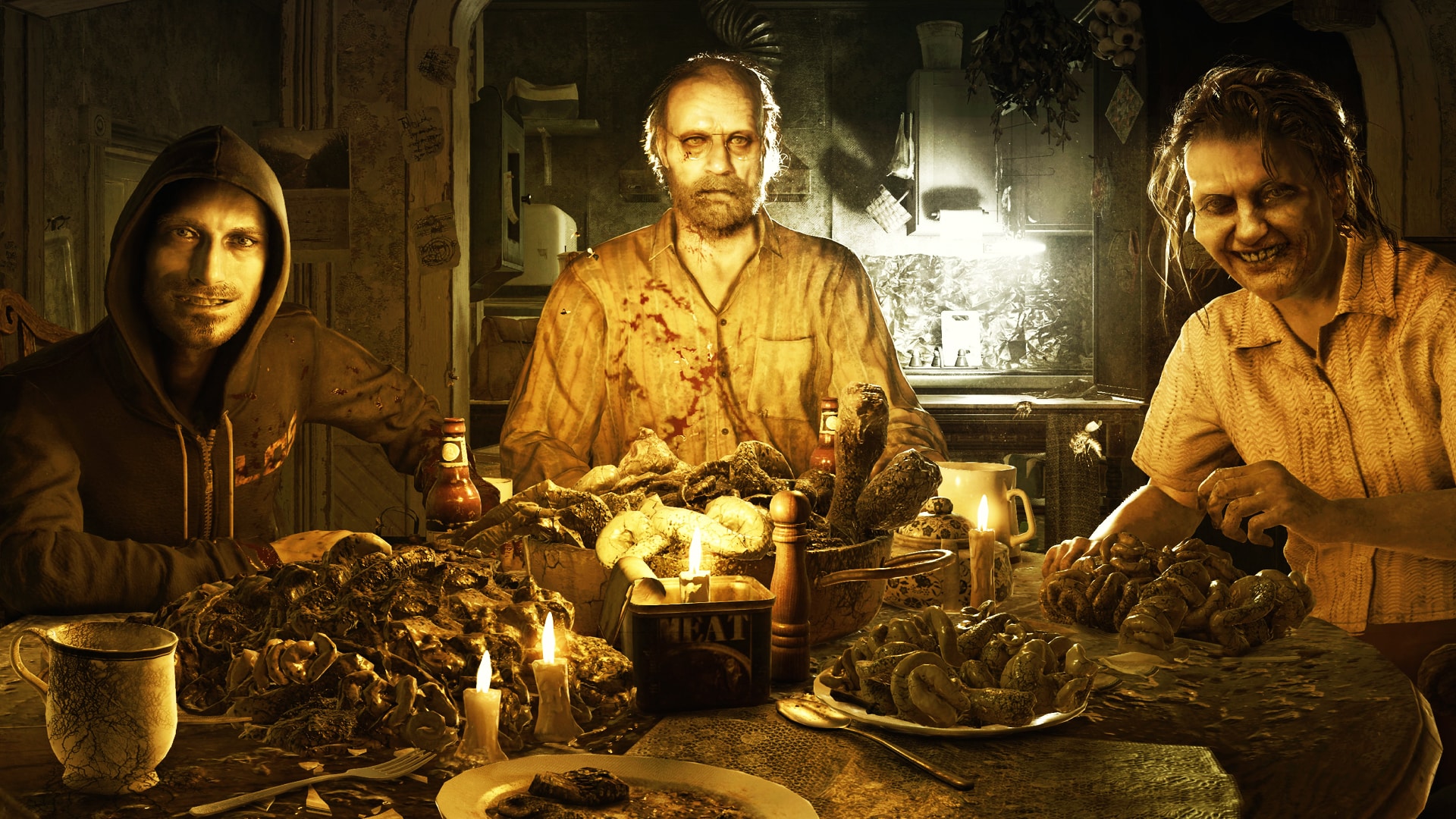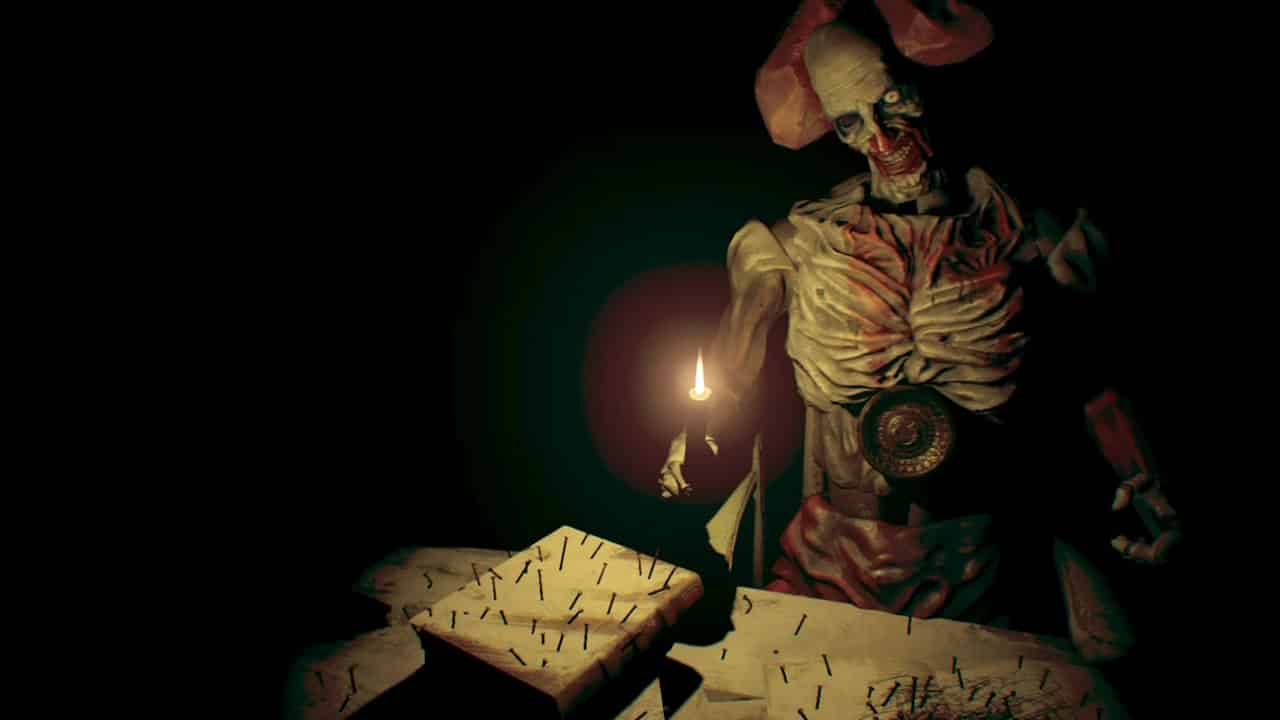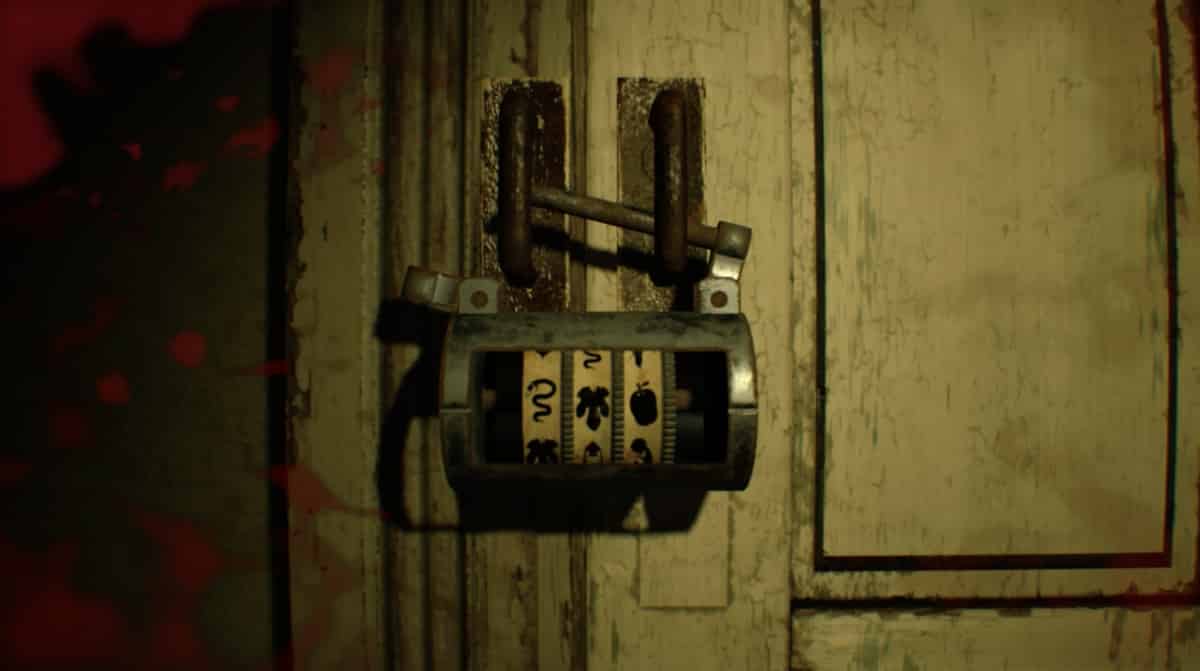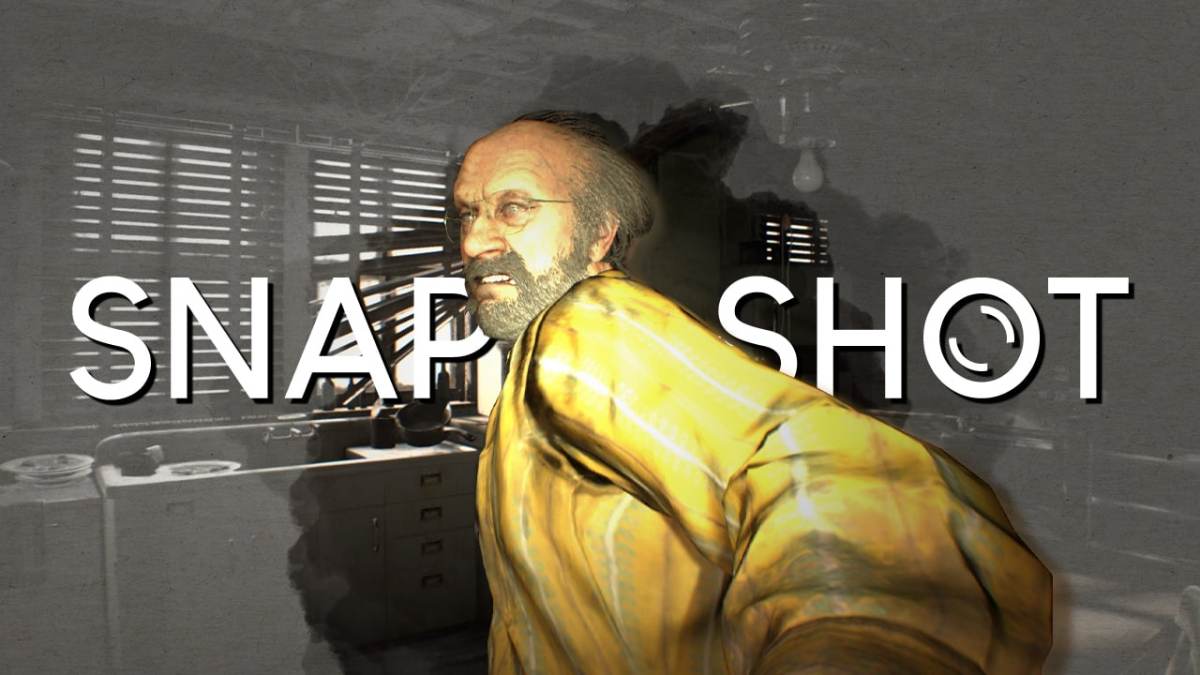When Resident Evil 7 was released early in 2017, it managed to make such a triumphant splash because of how it truly felt like a return to form. After the series had meandered and lost its way amidst bloated globetrotting sequels and forgettable spinoffs, RE7 pumped the brakes, reconsidered what made the series beloved in the first place, and brought those elements into a whole new world.
While the shift to first-person seemed jarring at first, this new perspective opened the door for all kinds of new terrifying scenarios that the player would have to overcome as they escaped from the deranged Baker family. But while most people might focus on the jump scares, hellish bosses, or resource management that hearkens back to the original games, the thing about Resident Evil 7 that’s stuck with me are a pair of puzzles that delivered a kind of challenge rarely seen in video games.
Comparing Resident Evil 7 to the original games is like comparing the appearance of an adult to their elementary school yearbook pictures. You can see similarities in the eyes and ears, perhaps the way their lips curve into a smile, but the person has clearly changed. This is what making your way through the brief descent into RE7’s hell feels like to me.
The core elements are all still there — resource scarcity, an expanding playground that doubles back on itself, and a never-ending parade of creatures that want to cause you bodily harm. The Molded feel like a cross between traditional zombies and the Regenerators of Resident Evil 4, Marguerite’s transformations feel like a hellish cross between Hunters and Lickers, and Jack Baker is a better and more tenacious Nemesis than the one we faced off against this year in Resident Evil 3. But one character in the story with no historical precedent is Lucas Baker, and he’s the source of one of the game’s most memorable moments.

Lucas Baker is kind of like an amalgam of The Riddler, Jigsaw, and Jake Paul. He’s less about transforming into a nightmarish beast that you have to pump endless rounds of ammunition into, and more about putting you in the kinds of scenarios that would drive most people past the brink of insanity. Ethan, Resident Evil 7’s protagonist, gets a taste of his machinations early on through one of the playable VHS tapes that act as flashback mechanisms, simply marked “Happy Birthday.” One of these recurring flashback characters is Clancy, the cameraman for a low-budget ghost-hunting reality show. We’re introduced to him early on in the game as a sort of tutorial guide to the house, and we quickly see that things don’t go well for him and his crew.
The Happy Birthday video shows that Lucas has tossed Clancy into what appears to be a darkened apartment. The only light stems from a candle being held by a decomposing body. Lucas makes your goal simple — take the candle into the next room, and use it to light the other candles on a birthday cake. Easy peasy.
But given that Lucas is clearly a psychopath, there’s a catch — a steady stream of water from the ceiling separates the two rooms, so there’s no way to get the candle to its destination without extinguishing the flame. And thus begins one of Resident Evil 7’s two fantastic escape room-inspired puzzles utilizing a terrifying scenario, real-world rules and logic, and a healthy dose of the franchise’s strange past to deliver an expertly crafted challenge.
The Happy Birthday escape room takes the spirit of the strange and obtuse puzzles of the original Resident Evil and bestows reality-based logic onto them. Where it seemed absurd that the Spencer Mansion would require all these hoops, ladders, keys, and statues for one to simply use a bathroom, the hell that Lucas concocts in Resident Evil 7 makes perfect sense for his character.

If you’ve stumbled across the various bits of optional backstory, you’ve discovered that Lucas grew up as a sort of wunderkind, with trophies and awards for achievements in science and engineering adorning his room. However, he also had dark thoughts and lacked basic human empathy, which laid the groundwork for the bioweapon known as Eveline to infect the family. So having Lucas create this arcane scenario makes perfect sense in this world.
Your escape room is filled with an array of items that seem completely random at first — the aforementioned candle, a filthy spyglass, a deflated balloon. But once you begin to explore your surroundings and think about how the elements would logically interact with each other in positive and negative ways, the pieces begin to fall into place. Like with a classic adventure game puzzle, you begin to speak the same language as the designers.
Though this only lasts a few minutes, it’s filled with these tiny “aha!” moments that give you the endorphin rush of solving a riddle, as well as effective jump scares and a growing sense of unease over the whole scenario. As you might be able to guess, things don’t ultimately work out too well for our cameraman. But Clancy crawled so that Ethan could fly.
If you’ve taken your time, thoroughly explored, been willing to backtrack, and unlocked all of the weirdo bird cages scattered throughout the grounds, then your Ethan is probably a beefed up killing machine with a healthy stockpile of weapons by this point in the game. But the team at Capcom wisely subverts this by tossing you back into the birthday scenario, where no amount of ammunition and stat upgrades will help you.

Before Ethan can even enter the area, you have to manually place all of your weapons, ammo, and tchotchkes in the item box outside the front door. It’s a nice touch that leaves you feeling incredibly vulnerable, save for the knowledge that Lucas doesn’t realize you learned from watching Clancy’s final moments. Completing the puzzle again, but knowing how to avoid that final twist that ended up ending Clancy, is a fantastic feeling, and one that really tips the scales of the conflict between Ethan and the Bakers.
The effectiveness of this puzzle scenario is used again in one of Resident Evil 7’s DLC challenges. Once again, poor Clancy is put at the center of the Baker family’s machinations, this time with Marguerite strapping him down to a bed and leaving the room for a moment. While she’s gone, it’s your job to finagle your way out of your restraints and explore every nook and cranny of the bedroom for a means of escaping. There are dozens of interactive elements in the room that might house clues, items, or secret paths. It kind of feels like a distilled version of Fireproof’s fantastic Room series of games.
The rub is that many of these elements make noise, which attracts Marguerite’s attention and brings her back to the room. You then only have a few moments to put everything back where it was and slip back into bed before she checks in on you. If nothing seems out of the ordinary, she’ll leave again. But if you forgot to replace a picture you removed from the wall or hang a lantern back up on its hook, it’s the end of the line for Clancy.
Both of these scenes provide unique and thrilling challenges that utilize the change in perspective, your own powers of deduction, and the history of the Resident Evil series as a whole in fantastic ways. They act as mental palate cleansers that throw a new gameplay situation at you, while simultaneously helping bolster the world and its characters. With all signs pointing to the reveal of Resident Evil 8 in the near future, it would be great to see Capcom take a look at how these two scenes were so successful and push it even further in the next installment.






Published: Jun 9, 2020 11:00 am